Suppressing Gravitational Instabilities In Protoplanetary Discs
Sahl Rowther, Farzana Meru, Rebecca Nealon, Grant M. Kennedy, Christophe Pinte
Hover on  blue text
for more information.
blue text
for more information.
A Warped Disc
- As the disc evolves, the warp propagates radially both inwards and outwards.
- Since the warp was introduced numerically, it is not sustained. Thus as the disc continues to evolve, the warp smooths out and the disc becomes coplanar.
- The influence of the warp quickly suppresses the spiral structures yielding an axisymmetric gravitationally stable disc.
Planet-Disc Interactions
- The planet suppresses large scale spiral structures due to gravitational instabilities and carves open a gap.
- The spiral arms generated by the planet are responsible for heating up the disc pushing it into the gravitationally stable regime resulting in a largely axisymmetric disc.
- The disc appears completely axisymmetric with ring and gap structures in
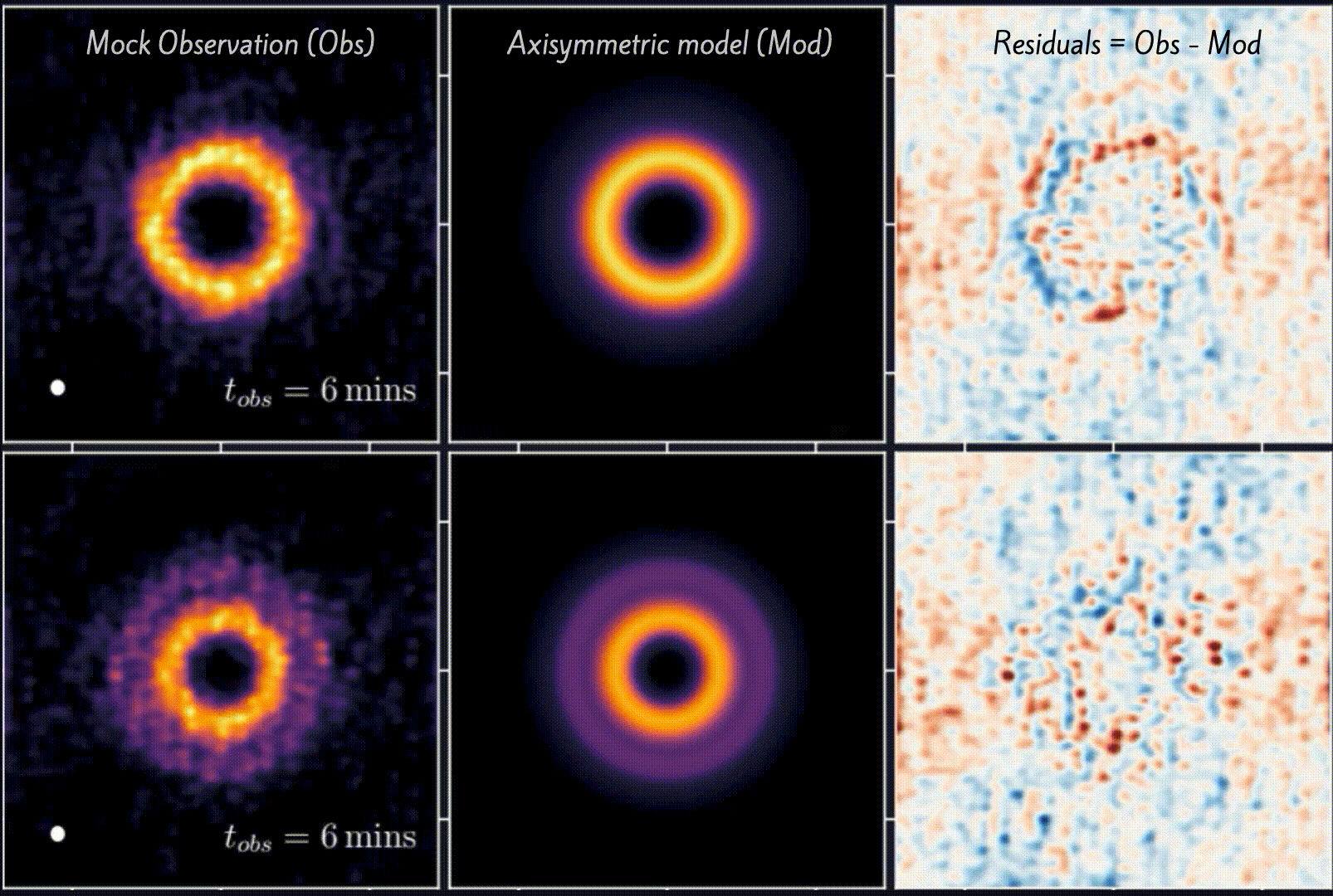 mock observations in certain ALMA configurations. The planet's presence can be inferred from it's spiral arms (in some ALMA configurations) and from the
mock observations in certain ALMA configurations. The planet's presence can be inferred from it's spiral arms (in some ALMA configurations) and from the 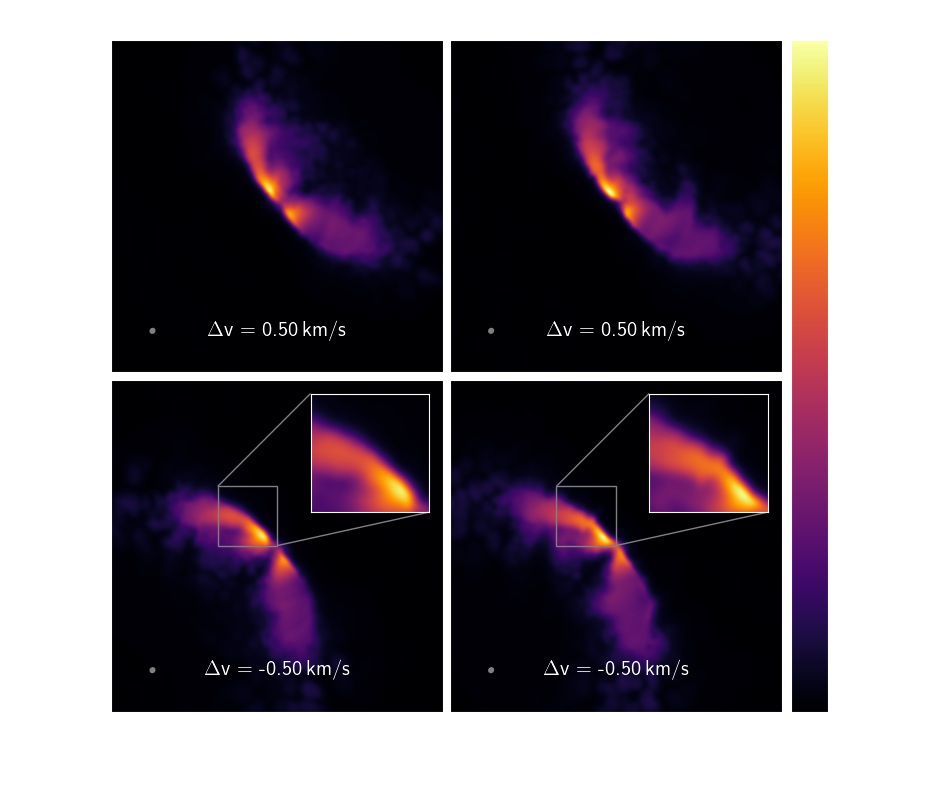 kink it causes in the gas kinematics.
kink it causes in the gas kinematics.
Why does the disc heat up?
In both scenarios, the PdV work plays an important role in altering the disc's evolution. The divergence of the velocity is directly linked to the PdV work, so we use it as a proxy for the PdV work.
Impact of the warp
-
In the warped region of the disc, adjacent annuli of gas are
misaligned with varying vertical height \(z\). This results in
an
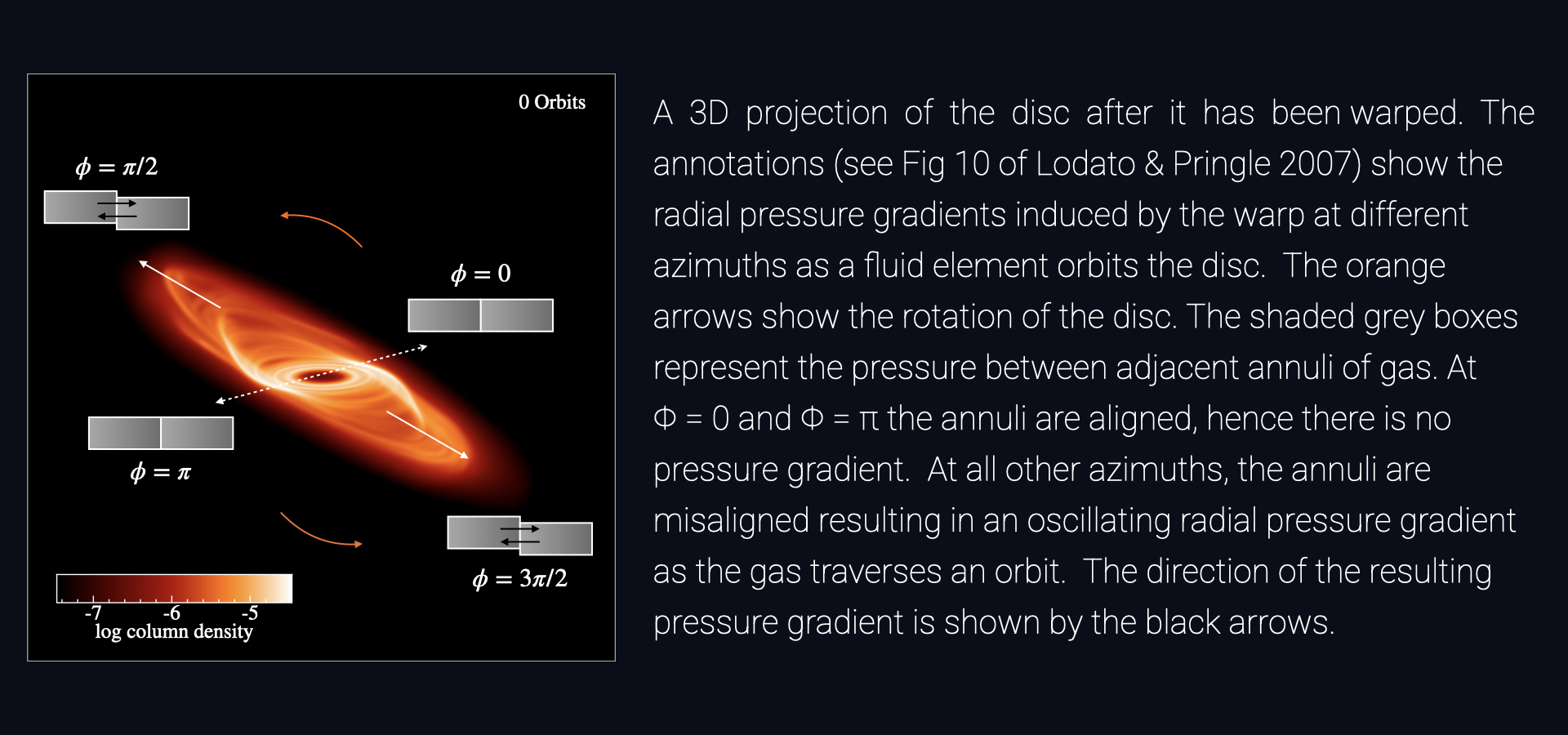 (oscillating radial pressure
gradient)
as the gas traverses an orbit.
(oscillating radial pressure
gradient)
as the gas traverses an orbit.
- This oscillating radial pressure gradient can trigger a strong response in the radial velocity of the disc (Lodato & Pringle 2007), which heats up the disc. This is especially apparent in the early stages as seen by the large magnitudes of the velocity divergence.
- As the warp dissipates, there is little variance in the pressure gradient. Thus, the magnitude of velocity divergence has greatly decreased as expected leading to less heating from PdV work.
Impact of the planet
- The spiral wakes generated by the planet as it migrates are regions of relative overdensities with respect to the disc background.
- The radially propagating spiral wakes can evolve into shocks.
- The exchange of momentum and energy between the density wakes and the disc at the shocks influence the global properties of the disc, heating it up.
Summary
- Both a warp and a giant planet can shorten the gravitationally unstable phase of a massive disc by suppressing the spiral structures, yielding axisymmetric ring and gap structures.
- In both scenarios, the disc is heated up pushing it into the gravitationally stable regime.
- Our results show that young massive discs do not necessarily have to show large scale spiral structures, potentially resolving the descreprancy between theory and observations.
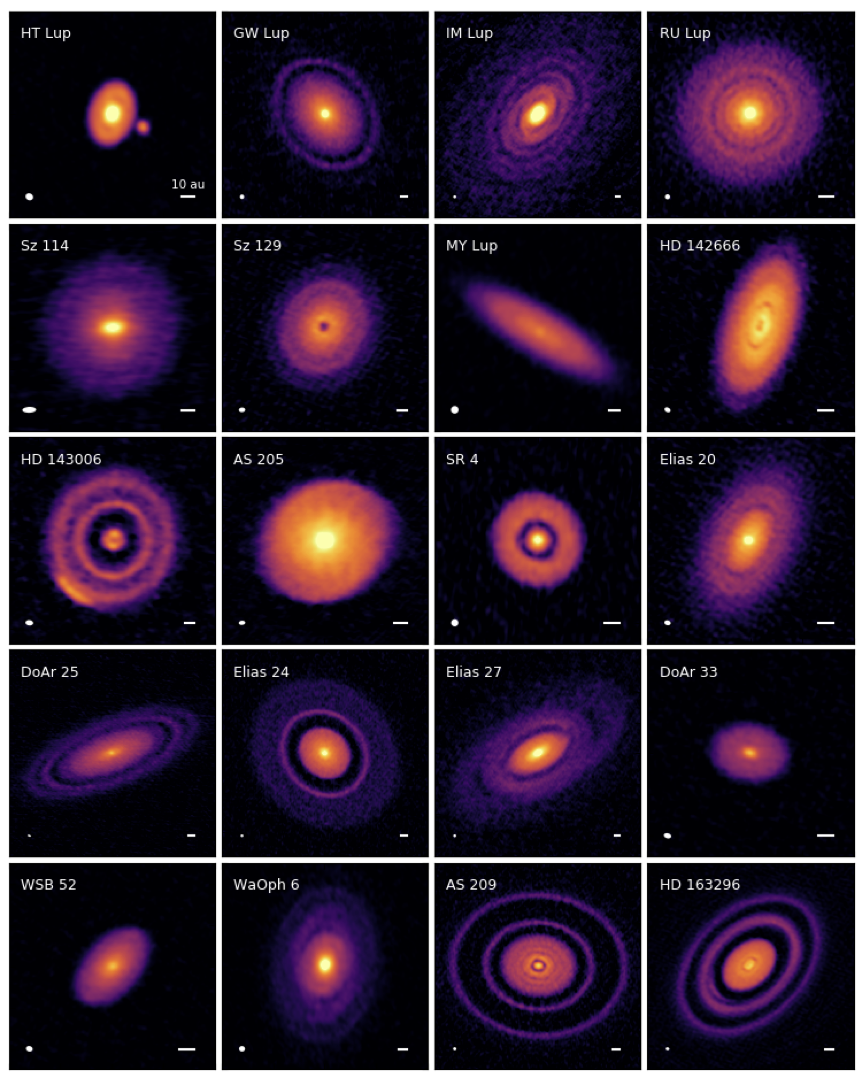 (Andrews et al. 2018
(Andrews et al. 2018
 Long et al. 2018)
Long et al. 2018) (Sheehan & Eisner 2018)
(Sheehan & Eisner 2018)
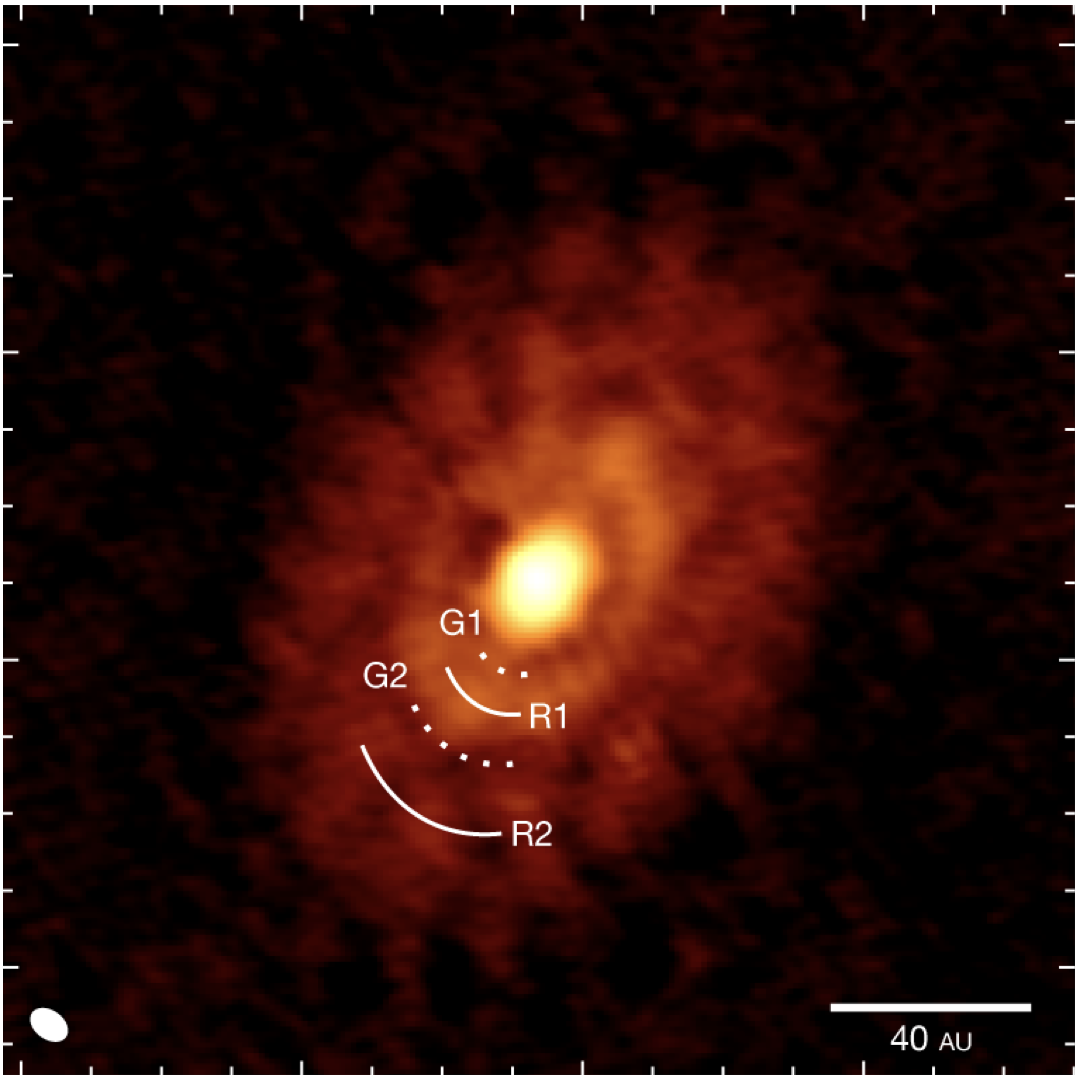 (Segura-Cox et al.
2020)
(Segura-Cox et al.
2020)